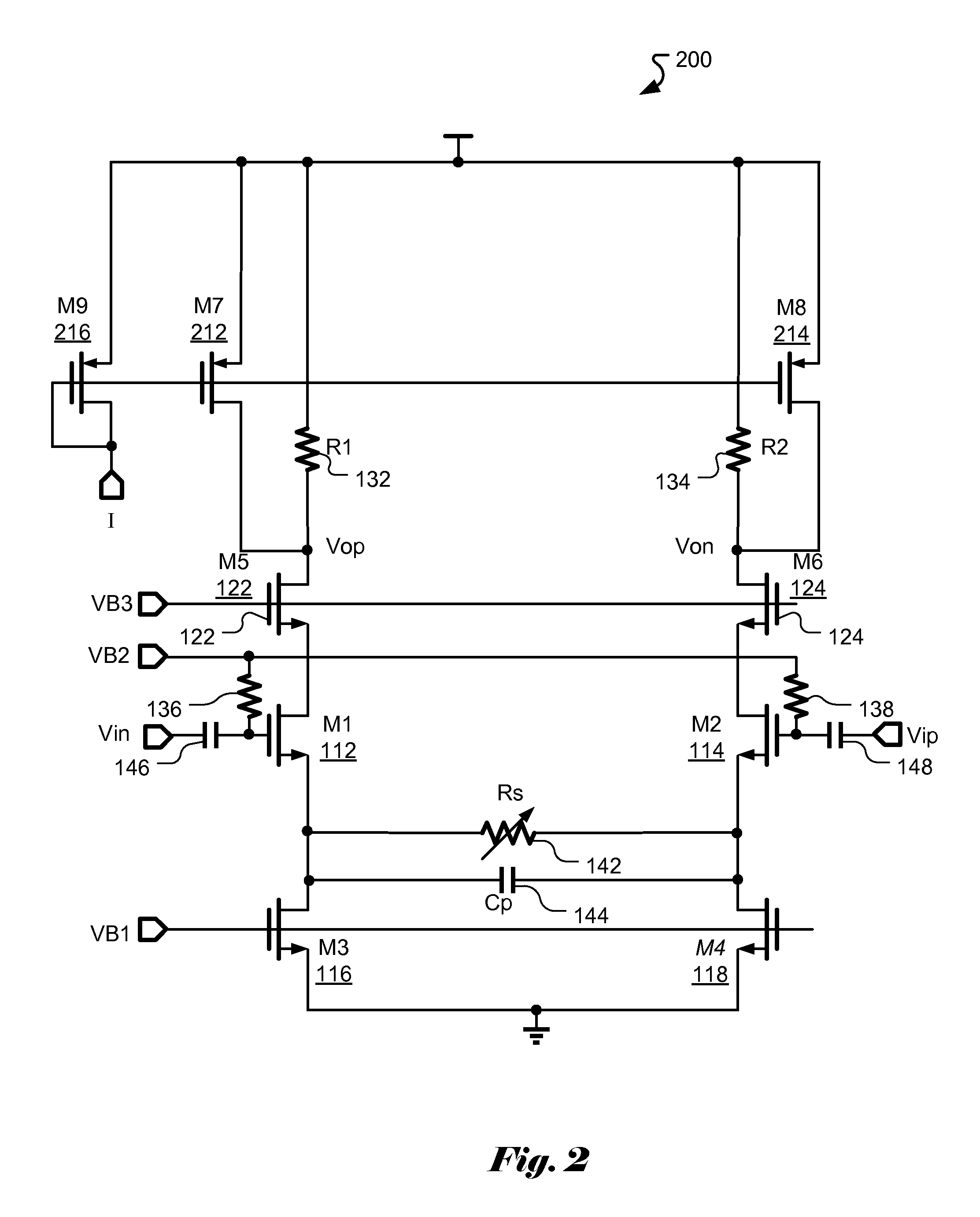Low Noise Amplifier with Current Bleeding Branch
- Summary
- Abstract
- Description
- Claims
- Application Information
AI Technical Summary
Benefits of technology
Problems solved by technology
Method used
Image
Examples
Embodiment Construction
[0013]FIG. 1 illustrates a conventional implementation of differential low-power amplifier 100 without a current bleeding circuit. The circuit has been widely used as a low-noise amplifier (LNA) for broad band RF receivers. The RF inputs Vin and Vip are AC coupled to the amplifier inputs through two respective AC coupling capacitors 146 and 148. The amplifier can also be configured as a single-ended input amplifier when one of the two inputs is AC grounded. M1112 and M2114 are input transistors and Rs 142 is the source degeneration resistor for adjusting the gain of the LNA. Cp 144 is the parasitic capacitor associated with the input transistors M1112 and M2114 which may limit the effect of source degeneration of resistor Rs 142 at high frequencies. M3116 and M4118 are transistors used as current sources while the transistor pair M5122 and M6124 forms a cascode stage which decouples the inputs and the outputs. VB1, VB2, and VB3 are DC bias voltages which provide for appropriate DC o...
PUM
 Login to View More
Login to View More Abstract
Description
Claims
Application Information
 Login to View More
Login to View More - R&D
- Intellectual Property
- Life Sciences
- Materials
- Tech Scout
- Unparalleled Data Quality
- Higher Quality Content
- 60% Fewer Hallucinations
Browse by: Latest US Patents, China's latest patents, Technical Efficacy Thesaurus, Application Domain, Technology Topic, Popular Technical Reports.
© 2025 PatSnap. All rights reserved.Legal|Privacy policy|Modern Slavery Act Transparency Statement|Sitemap|About US| Contact US: help@patsnap.com



